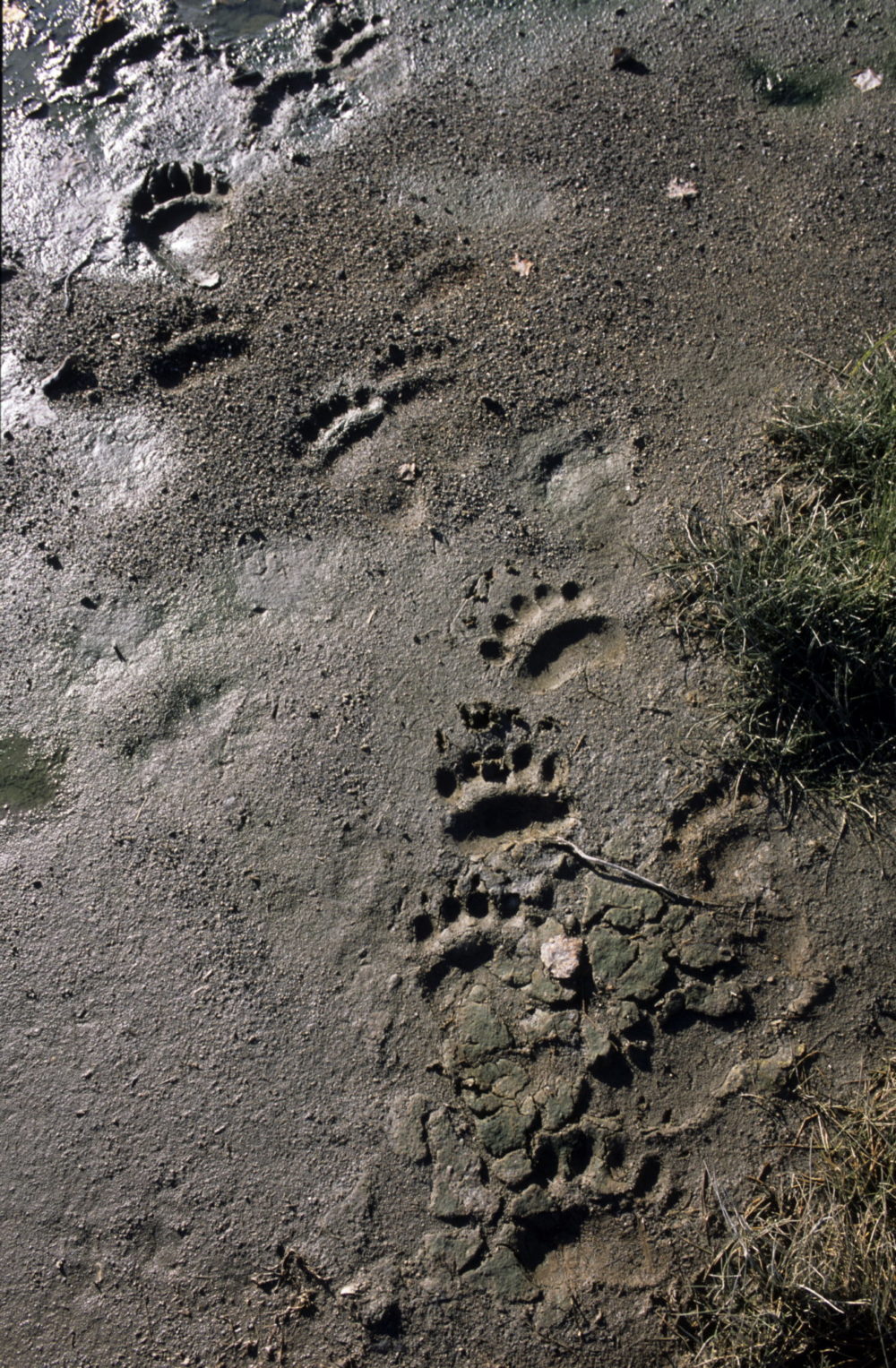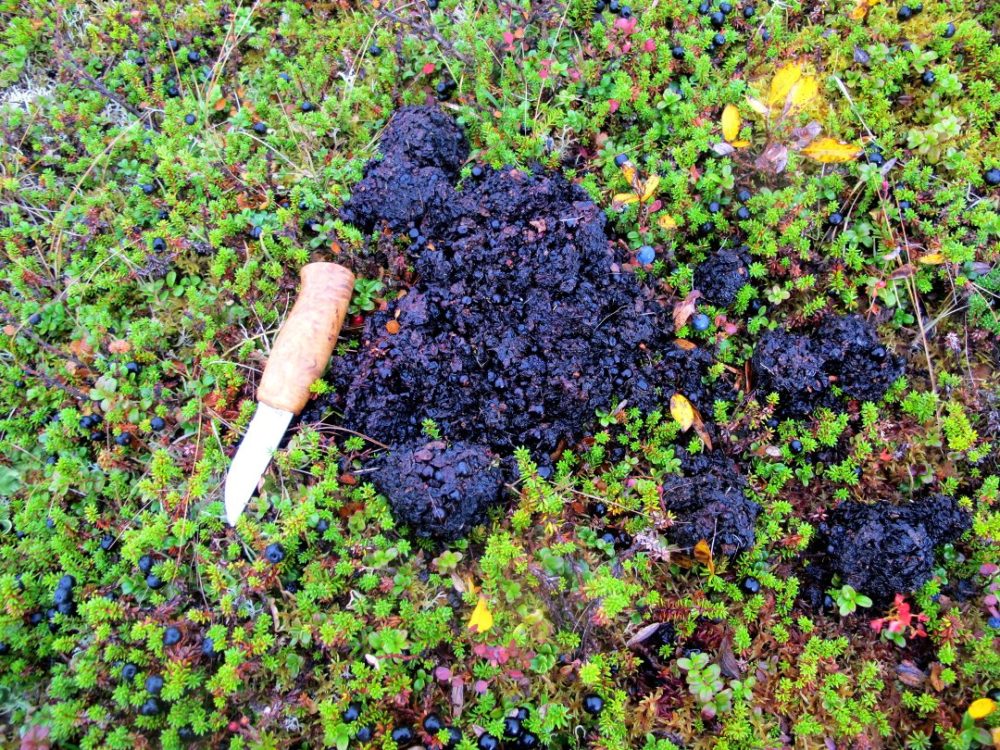Was it a bear?
Written by Nicklas Iversen | Last edited 28. May 2021
When you find tracks in the forest, it is not always easy to know what sort of animal made them. On this page, we take a closer look at tracks and traces left by bears!
THE FOOTPRINTS
The bear has feet and leaves quite large tracks. It’s footprint has impressions made by five toes, and the long claws are clearly visible. The bear is a plantigrade animal, which means that it walks on the soles of its feet. Therefore, the heel will usually be visible in the print of both the front and back foot. The front and back footprints are different. The back foot is slightly reminiscent of a broad human footprint.

BEAR DROPPINGS
Bjørnebæsjen er ulik avhengig av hva bjørnen har spist. Bjørnen har ikke en veldig god fordøyelse. Dermed ser man ofte hele bær, planterester, maur, hår og beinrester.
Bear droppings, or scat, vary according to what the bear has eaten. Bears do not have very good digestion, so whole berries, plant residues, ants, hair and bits of bone can often be seen.
This article has been written by Bjørn Henrik Stavdal Johansen, a nature guide at Visitor Centre Carnivore Flå.
